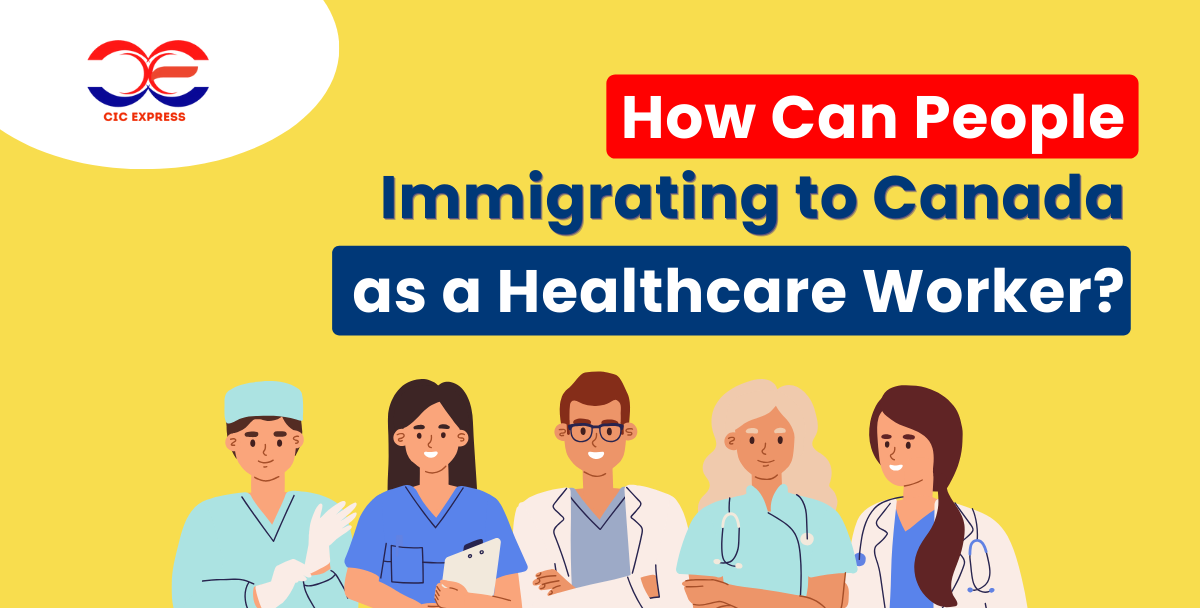How Can People Immigrate to Canada as a Healthcare Worker?

With an alarming lack of healthcare workers in Canada, this article will provide an outline of how to immigrate to this country as a healthcare worker and obtain certification to find work.
In September of last year, CTV News reported on three teenagers who were unable to receive care at their local hospital in Clinton, Ontario, due to an early closing of the facility’s emergency room. According to the report, their local emergency department closed at 6 p.m. that night, forcing them to journey to another hospital 20 km away for medical assistance.
As the report progresses, it states that emergency center closures in Canada are expected to continue “because finding people to work there is a key problem.”
Immigrate to Canada as a healthcare worker.
Although the preceding anecdote is only one example, it serves as a strong indicator of a rising problem in this country: Canada requires more healthcare personnel. The following will provide an overview of some of the immigration options open to foreign people seeking to work in the healthcare profession in Canada.
Express Entry – Category-Based Draws
Launched in June 2023, Express Entry category-based draws allow the federal government to target immigration candidates with specified recent work experience and skill proficiency for permanent residence in Canada. This year, one of the five occupational focus categories is healthcare.
Express Entry: “Standard”
Express Entry focuses on candidates who are eligible for immigration to Canada through one of three programs managed by this application management system: the Federal Skilled Worker Program (FSWP), the Federal Skilled Trades Program (FSTP), or the Canadian Experience Class (CEC), and ranks them based on their Comprehensive Ranking System (CRS) score.
Note: Standard Express Entry lotteries are open to all eligible immigration candidates, not just healthcare providers.
- Foreign nationals trained as nurses may be eligible for the FSWP and CEC.
PNPs in Canada
Provincial Nominee Programs (PNPs), which are run in all but two Canadian provinces and territories (excluding Quebec and Nunavut), allow local governments to choose immigration candidates who they believe can best help address local labor market challenges.
Five examples of PNP streams available for healthcare professionals:
- Ontario’s Human Capital Priorities Stream
- British Columbia’s Healthcare Professional category is available under its Skills Immigration and Express Entry immigration pathways
- Saskatchewan’s International Health Worker EOI pool (nurses)
- Nova Scotia’s Labour Market Priorities Stream
- New Brunswick’s Internationally Educated Nurses (IEN) program
Obtaining certification as a foreign healthcare practitioner in Canada
As a foreign national coming to Canada, entering the country is merely the first step toward a healthcare career. Foreign healthcare professionals, including nurses, must seek accreditation or licensure to practice in their preferred Canadian province or territory.
Note: Because the licensing and accreditation process for healthcare professionals varies by region – each province has its institution that licenses internationally educated nurses (IENs), an IEN who is accredited in one province may need to go through another licensing process if they relocate to another Canadian province/territory.
What broad processes are involved in the accreditation process?
Again, the accreditation process for healthcare workers differs by province. However, the following illustrates the general processes an IEN must take to become accredited to work in Canada.
- Upon arrival in Canada, contact the appropriate regulatory agency in your province. The appropriate institution to contact will depend on the sort of nursing license necessary.
- In most circumstances, the following step is to complete an assessment with the National Nursing Assessment Service (NNAS), which compares an individual’s qualifications to Canadian standards. This assessment also gives successful applicants an Advisory Form, which must be submitted with their next application to the relevant provincial regulatory agency. It should be noted that NNAS is not used in Quebec or the three Canadian territories. Instead, each of the four zones has its assessment procedure.
- Once the assessment is completed and the fees have been paid, apply to the provincial regulatory organization where you intend to practice. This may necessitate the completion of additional provincially mandated educational programs for an IEN to achieve license criteria in a certain region.
Connect Province Immigration for more information on the initiatives that various Canadian provinces are taking to expedite the healthcare certification process and put globally educated healthcare professionals to work sooner.








